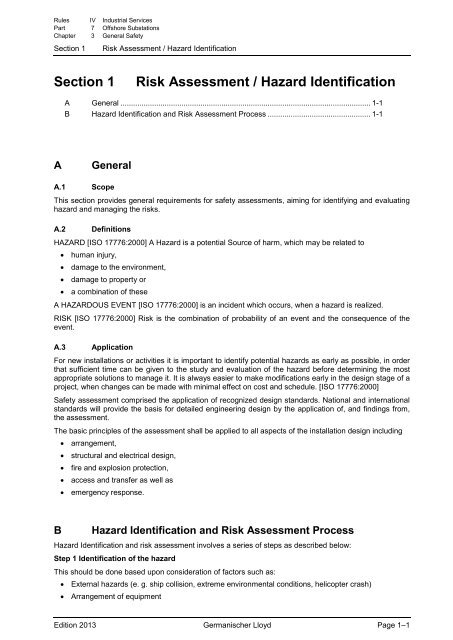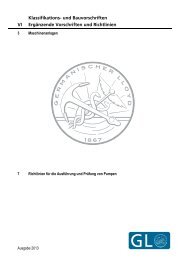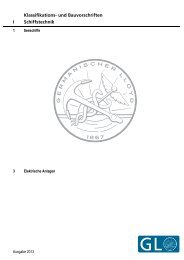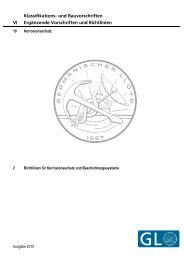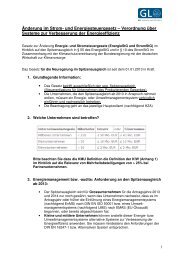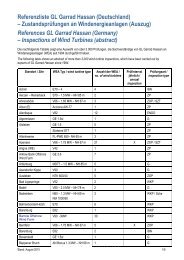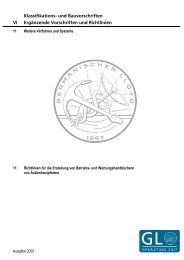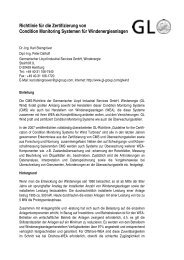(IV-7-3) General Safety
(IV-7-3) General Safety
(IV-7-3) General Safety
You also want an ePaper? Increase the reach of your titles
YUMPU automatically turns print PDFs into web optimized ePapers that Google loves.
Rules <strong>IV</strong> Industrial Services<br />
Part 7 Offshore Substations<br />
Chapter 3 <strong>General</strong> <strong>Safety</strong><br />
Section 1<br />
Risk Assessment / Hazard Identification<br />
Section 1<br />
Risk Assessment / Hazard Identification<br />
A <strong>General</strong> ....................................................................................................................... 1-1<br />
B Hazard Identification and Risk Assessment Process ................................................. 1-1<br />
A<br />
<strong>General</strong><br />
A.1 Scope<br />
This section provides general requirements for safety assessments, aiming for identifying and evaluating<br />
hazard and managing the risks.<br />
A.2 Definitions<br />
HAZARD [ISO 17776:2000] A Hazard is a potential Source of harm, which may be related to<br />
• human injury,<br />
• damage to the environment,<br />
• damage to property or<br />
• a combination of these<br />
A HAZARDOUS EVENT [ISO 17776:2000] is an incident which occurs, when a hazard is realized.<br />
RISK [ISO 17776:2000] Risk is the combination of probability of an event and the consequence of the<br />
event.<br />
A.3 Application<br />
For new installations or activities it is important to identify potential hazards as early as possible, in order<br />
that sufficient time can be given to the study and evaluation of the hazard before determining the most<br />
appropriate solutions to manage it. It is always easier to make modifications early in the design stage of a<br />
project, when changes can be made with minimal effect on cost and schedule. [ISO 17776:2000]<br />
<strong>Safety</strong> assessment comprised the application of recognized design standards. National and international<br />
standards will provide the basis for detailed engineering design by the application of, and findings from,<br />
the assessment.<br />
The basic principles of the assessment shall be applied to all aspects of the installation design including<br />
• arrangement,<br />
• structural and electrical design,<br />
• fire and explosion protection,<br />
• access and transfer as well as<br />
• emergency response.<br />
B<br />
Hazard Identification and Risk Assessment Process<br />
Hazard Identification and risk assessment involves a series of steps as described below:<br />
Step 1 Identification of the hazard<br />
This should be done based upon consideration of factors such as:<br />
• External hazards (e. g. ship collision, extreme environmental conditions, helicopter crash)<br />
• Arrangement of equipment<br />
Edition 2013 Germanischer Lloyd Page 1–1


